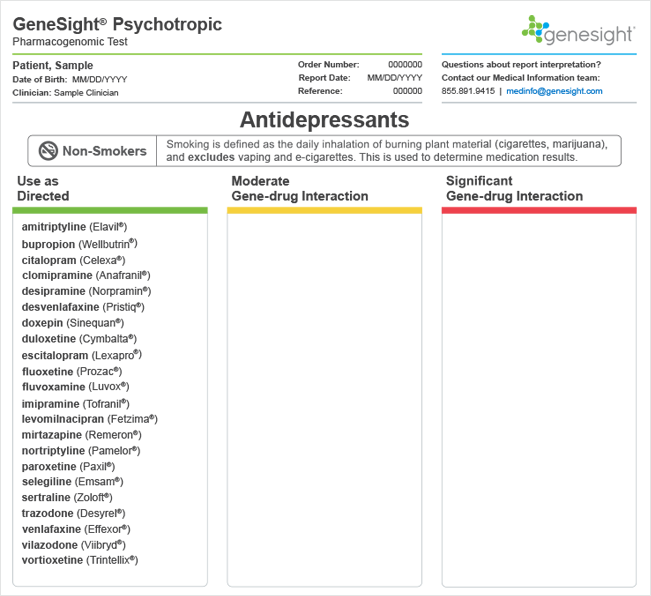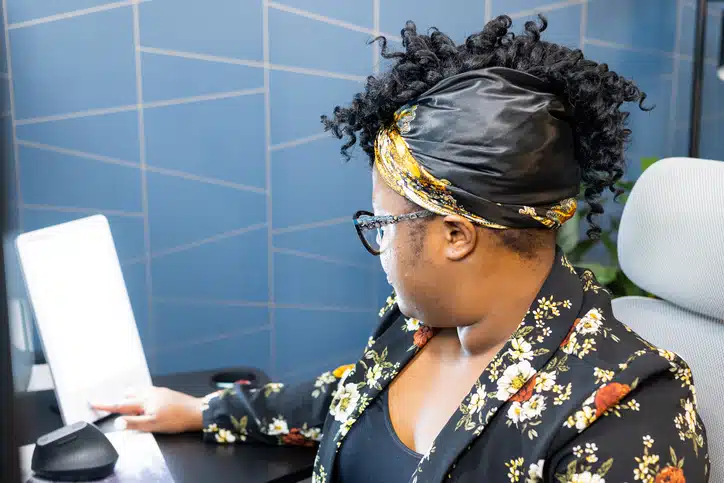You are at your health care provider’s office to take the GeneSight test. The inside of your cheeks is swabbed, and your healthcare provider puts the two swabs in a special envelope, drops the envelope in a FedEx package, and sends it on its way.
What happens next is a precise and efficient process that has been done over a million times.
Numerous laboratory scientists, data analysts, and other professionals work to ensure your test is processed and reviewed with the utmost care. Our team works quickly: in nearly all cases, only 36 hours pass from the time the swabs arrive in our lab to the time a completed GeneSight report is sent back to your doctor.
We have worked hard to ensure the quality and efficiency of our processes. In fact, the GeneSight lab is accredited by several regulatory agencies. Some of the certifications we maintain are CLIA (Clinical Laboratory Improvement Amendments), CAP (College of American Pathologists) and New York State Department of Health.
“We are constantly reviewing ways to further improve our systems and process,” said Sara Lazaro, laboratory manager of the Myriad Neuroscience lab in Mason, Ohio, a suburb of Cincinnati. “Our lab is certified by the industry’s leading standards bodies, and we undergo routine inspections and evaluations to ensure we meet and exceed all quality standards.”
Let’s go inside our lab and start at the beginning, when we receive your sample.
Step 1: Receiving the Sample
All GeneSight tests are sent via FedEx Overnight and arrive early each weekday morning at our lab. Myriad Neuroscience employees meet the FedEx trucks at daybreak to load bins and quickly bring the envelopes into our accessioning room.
Inside our secure lab, each envelope is opened, and the patient documents and information are scanned and received in our system. This does two things: 1) it enters the data into our system and connects your DNA sample to your patient information, and 2) it begins the process of working with insurance companies for reimbursement.
“That part of the process takes about 4 hours, depending on how many samples we receive,” said Lazaro. “We often will receive more than 1,000 samples a day…that’s a lot of envelopes to open and orders to process!”
Once the sample has been cataloged in our system, DNA extraction begins.
Step 2: DNA Extraction
The next step in our process is to extract your genetic information from the cotton swab collected in your doctor’s office. Although we request two cheek swabs, only one is used in the process. The second swab is held in reserve in case there wasn’t enough DNA included in the first swab or the test fails (this back-up means we don’t have to ask you to go back to your doctor’s office to be swabbed again).
The cotton swab tip is put into a swab plate; the handle is discarded. The swab plate holds 91 samples and is used in a process that pulls the DNA from the swab and amplifies it so that analysis can be done.
Our Quality Control team looks to ensure the reagents used for sample testing are of the highest quality.
Step 3: Analyzing the DNA
The next step is a complex process where we analyze your DNA through three platforms, identifying markers on 15 genes that control how your body will metabolize and/or respond to medications commonly prescribed to treat depression, anxiety, ADHD and other psychiatric conditions.
First, DNA from all 91 samples is amplified and transferred to a chip that is 1/6ththe size of the credit card in your wallet. Then, the amplified DNA fragments are measured using mass spectroscopy or fluorescent light before it is sent to analysis, where our computers evaluate what mutations are present in your genes. The data analysis team carefully reviews all samples to ensure any problems are resolved. If needed, the team will test new DNA from the sample provided on the second swab.
“This step involves a combination of chemistry and computers,” said Lazaro. “It is a highly complex and precise process that takes 5 to 6 hours.”

Step 4: Building the GeneSight Report
Once the DNA has been extracted and analyzed, the information goes to the computer lab within the Myriad Neuroscience genetics lab. Here, our scientists run the information through our proprietary algorithm to determine how your genes may affect the metabolism and mechanism of action of certain medications.
While there are more than 20,000 genes in your body, the GeneSight test analyzes 15 different genes to determine how you will process 64 psychotropic medications.
The GeneSight test report (see a sample here) is then generated and sent electronically via a secure portal to your doctor to help him or her determine which medications may be more likely to work for you and which may require dose adjustments, be less likely to work, or may have an increased risk of side effects based on your genetic results. This is done by placing each medication into one of four color-coded categories:
This categorization enables your doctor to select genetically appropriate medications, increasing the likelihood of response and reducing the risk of adverse events.
You should ask your doctor to review your report with you and ask for your own copy. The report can be useful throughout your life.
Our medical information team (855.891.9415 or medinfo@genesight.com) is available to review your test results with you in far more detail than just the red-yellow-green bins.
To see if the GeneSight test can help you, please start by taking the next step here.





